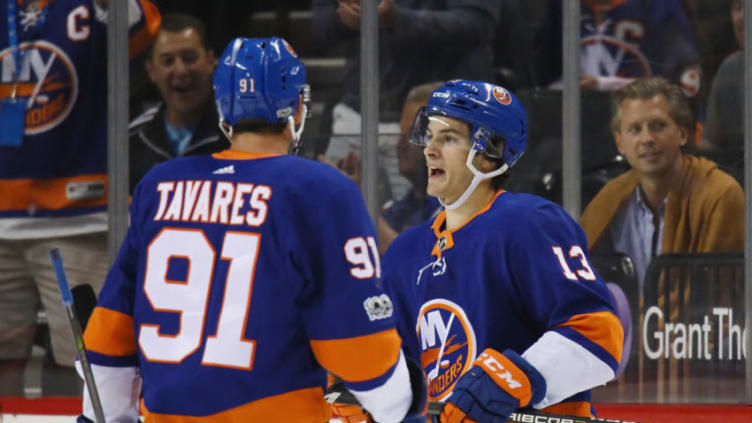New York Islanders Are Running Negative Efficient Power Play

New York Islanders power play is awful. Just terrible. Think of the grossest GIF possible and that’s the Islanders man advantage right now. So what gives. Why?
At the moment the New York Islanders have the worst power play in the NHL. With 20 power play opportunities, the Islanders have scored on absolutely none of them. And that’s after bringing in a dedicated resource in Scott Gomez in the summer and tossing Kelly Buchberger into the mix.
But for some reason, the New York Islanders haven’t been able to improve on their 28th ranked power play last season. Actually, the power play is worse. Much, much worse than what the stats tell you.
Like I said, the Isles are 0-for-20 on the man advantage through six games in the 2017-18 season. Ranking the team dead last for the man advantage out of 31 teams. Including the brand new Vegas Golden Knights.
But if you want to get technical about things, and I very much do, the Islanders are running a negative efficient power play.
Negative Efficiency
Think about it for a second. The power play efficiency stat counts the number of goals a team scores in the number of power play opportunities they’ve had. With 10 goals on 100 chances, a power play would efficient at a rate of 10%. Simple enough, right?
But the New York Islanders have let up a number of shorthanded goals. In fact, they’ve given up three. Which is the second worst in the league. Thanks Buffalo for your five short-handed goals against.
With those three shorthanded goals, the Isles have been scored on more frequently than they themselves have scored. Which is zero in case your wondering. (You shouldn’t.) That’s a -15% efficiency in my made-up stats world.
Want your voice heard? Join the Eyes On Isles team!
What’s The Problem?
From my vantage point, it’s the sluggishness of the Islanders power play cycle. The New York Islanders just don’t seem in any hurry to move the puck around the offensive zone. Which is the primary goal of a power play unit in its quest to score a goal.
The team with the extra man should take the room provided in the offensive zone to pull defenders out of position to open up shooting lanes. That seems like power play 101. At least it does to me. To do this the players on the attacking side of the play need to move the puck around and have the defenders chase the puck carrier.
Moving the puck around at a pedestrian rate allows the defending team to retain its structure to limit shooting attempts. It also allows the goaltender to easily track the puck around the ice and put them in position to make a stop.
Getting shots on goal is step one to scoring a goal, but step two is optimizing the scoring chances. And the New York Islanders are absolutely pedestrian with their power play strategy. That needs to change as of yesterday. Predictably is one thing, but pedestrian puck movement does nothing to optimize an already optimized situation with one fewer player on the oppositions team.
Next: Top/Bottom 3 Isles Players vs. Kings
Step one has to be “urgency” for the Islanders. We all remember what happened last season. Losing out on the playoffs by a single point. Imagine if the Isles power play had been just another 1%-3% more efficient. How many points would that have added to the tally?